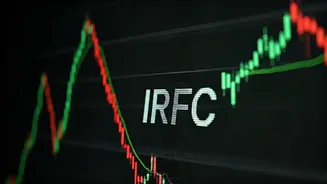Understanding Market Dynamics
To invest wisely, understanding the ever-changing market dynamics is critical. Many financial instruments fluctuate based on various forces, including
economic indicators, company performance, and global events. Monitoring these aspects and staying informed about market volatility are essential first steps. Examining historical data, such as past performance, helps investors understand trends and cycles. Furthermore, being aware of external factors, like geopolitical events or changes in government policies, allows investors to predict potential impacts on their investments. By constantly evaluating these elements, investors gain a robust foundation for making calculated decisions. The ability to distinguish market trends also helps investors select proper assets and adjust investment approaches to adapt to various market conditions. It's important to adopt a proactive method to keep up with the market trends, since it empowers investors to mitigate risks and make the most out of profitable opportunities. The ability to monitor market trends helps investors to build a successful and adaptive investment approach.
Leveraging Market Tools
Several market tools can streamline your investment analysis and decision-making. These tools offer real-time data, insights into market trends, and risk assessment options. Platforms provide analytical tools like technical indicators, which assist in identifying possible trading opportunities and trends based on historical price movements and trading volumes. Many platforms also offer charting tools to track prices and visualize market changes, which is beneficial for technical analysis and understanding market sentiments. Many software programs feature research and screening tools, which help investors filter and select investment opportunities based on their criteria and risk tolerance. Various platforms provide portfolio tracking functions, allowing investors to monitor their investment performance and rebalance their portfolios as needed. With the use of appropriate tools, investors can simplify complex analyses, save time, and make more data-driven decisions that could potentially improve their investment results. Always ensure to understand how to use these tools properly, so you can leverage these resources.
Embracing Investment Ideas
Generating investment ideas requires a blend of market knowledge and creative thinking. Consider conducting comprehensive research on different assets. Examining company fundamentals such as revenue, earnings, and debt levels can show an organization's financial health. Also, evaluate the industry dynamics to identify potential growth prospects. Diversifying your portfolio across various asset classes is also important. This approach minimizes risk by ensuring that the performance of one asset does not entirely depend on other assets. For example, consider investing in stocks, bonds, real estate, and commodities. Continuously review and rebalance your portfolio as markets shift to maintain your preferred asset allocation and manage risk efficiently. When generating new ideas for your investments, always consider your individual goals, risk tolerance, and time horizon. Always assess your investment ideas based on those factors to make suitable decisions.
Staying Informed Continuously
Staying updated with market news and trends is a continuous process that is key to successful investing. Subscribing to financial publications, using market analysis, and monitoring real-time data providers will allow you to get the latest updates. Watching industry specialists and following their analysis can offer valuable insights. Many experts provide detailed market analysis. Networking with other investors and participating in online forums can also help you understand and discuss investment strategies. Continuous learning and information gathering assist in recognizing opportunities and making adjustments to your investment strategy. Reviewing market trends and staying aware of global events will allow you to manage risks and improve returns. Continuous learning is essential for every investor.
Using Risk Management
Effective risk management is essential in the investment world to safeguard your assets. This involves identifying potential risks, assessing their impact, and implementing strategies to mitigate them. Diverse approaches such as diversification and hedging can help manage different types of risks. Diversification distributes your investments across different asset classes, reducing the impact of any single investment's poor performance. Hedging strategies, which include options and futures, help protect against potential losses. Set clear stop-loss orders to automatically sell an investment when it reaches a certain loss level, hence limiting your potential downside. It's also important to continually assess your risk tolerance, which may change over time, and adjust your investment strategy accordingly. By adopting a proactive method to risk management, investors can navigate the market with more confidence and work towards achieving long-term financial goals.












